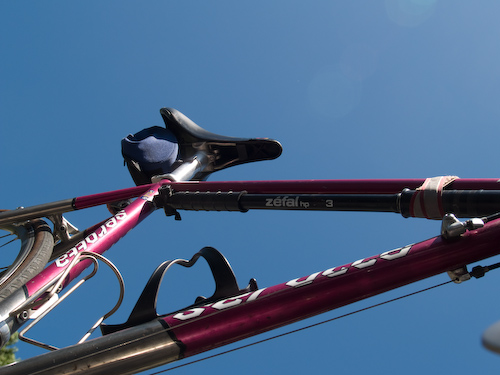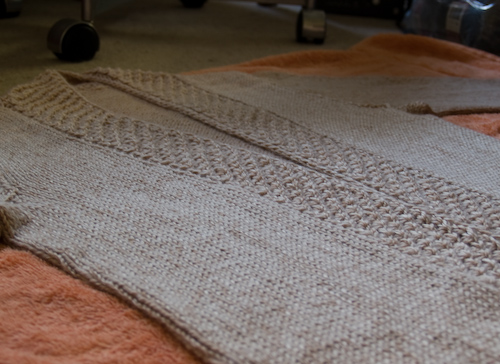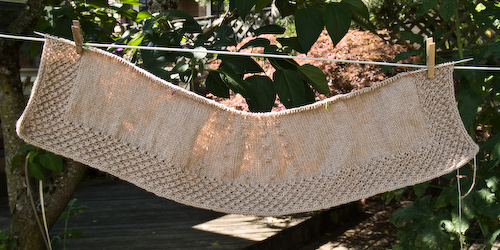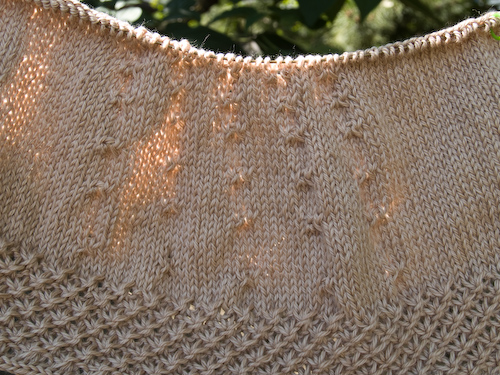
Three days left before the start of the Tour de France. I’m anticipating a thrilling edition of the race and plotting a new sweater design to go with it. For some time now I’ve been kicking around the idea of a little 3/4-sleeve summer jacket with an edge treatment in the beautiful Daisy Stitch you see above, knit from Louet’s worsted weight MerLin (this is actually worsted MerLin’s discontinued but basically identical prototype, Avalon). I have significant design hurdles to overcome (How do I change needle sizes to get the fabric I want in the Daisy Stitch and in stockinet? What kind of shoulder construction will work best?), but that’s perfect for Tour knitting. And of course thinking of my Daisy jacket in company with cycling brought to mind the the popular 1890’s music hall song, “Daisy Bell,” known to most (among those who know it at all) as “Bicycle Built for Two” or “Daisy, Daisy:”
Daisy, Daisy, give me your answer, do!
I’m half crazy, all for the love of you.
It won’t be a stylish marriage
I can’t afford a carriage
But you’ll look sweet upon the seat
Of a bicycle built for two.
The original isn’t much heard anymore, but the song has entered the folk tradition and spawned a variety of saucy answer choruses. In my family (and it’s a family that knows more 100-year-old ditties than average, thanks to my grandmother and mother, and always appreciates a saucy tune), we’ve always sung:
Harry, Harry, here is my answer true:
I’ll not marry in spite of my love for you.
If you can’t afford a carriage
There won’t be any marriage.
‘Cause I’ll be damned if I’ll be crammed
On a bicycle built for two.
My Daisy is designed for a modern age in which a girl might well be tickled to be married from a tandem. But in fact, the social history of women and cycling intrigues me. You should read some of the period scientific literature warning against permitting a young woman to ride a bicycle, both because it might damage her reproductive organs and because by angling the seat a certain way she might derive (gasp!) sexual gratification. (This last is pretty hilarious to any girl who’s ever ridden a bicycle, ever, but the men of science of the 1800s don’t seem to have applied as much imagination in testing their hypotheses as they did in formulating them… they don’t seem to have thought to ask an actual woman what it felt like to straddle much of anything, for instance.) Bicycles represented a new kind of freedom for women, a measure of control over their own mobility and a new opportunity to use their bodies athletically. A quote from Susan B. Anthony: “Let me tell you what I think of bicycling. I think it has done more to emancipate women than anything else in the world. It gives women a feeling of freedom and self-reliance. I stand and rejoice every time I see a woman ride by on a wheel…the picture of free, untrammeled womanhood.” And another, which I love, from Frances Willard, a cycling enthusiast who was otherwise conservative enough to lead the Women’s Christian Temperance Union: “I would not waste my life in friction when it could be turned into momentum.”
And hey, the bicycle helped get us out of corsets, ladies. If that sentiment makes you want to follow the Tour this year, it’s not too late to join the knit-along on Ravelry.







